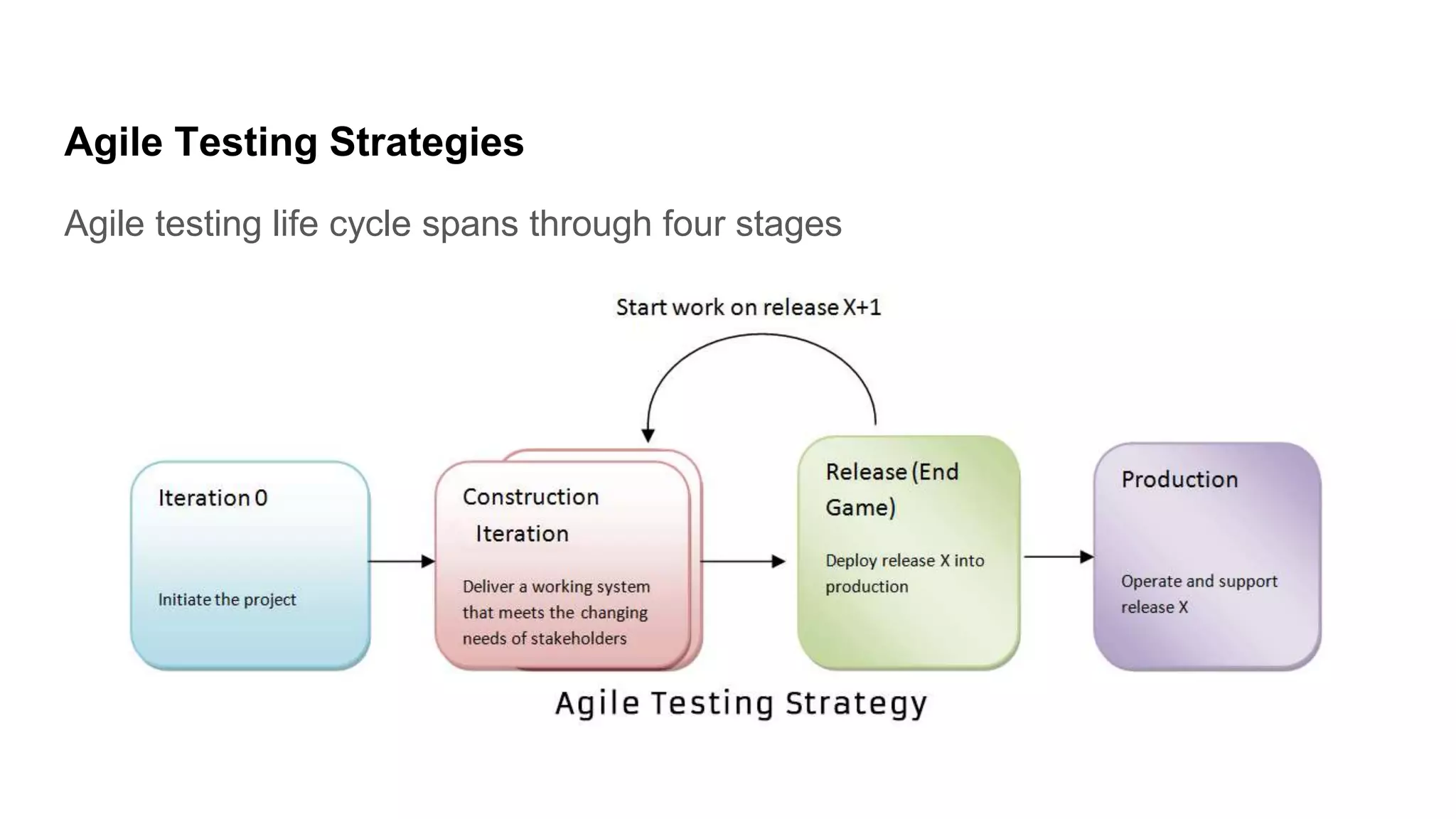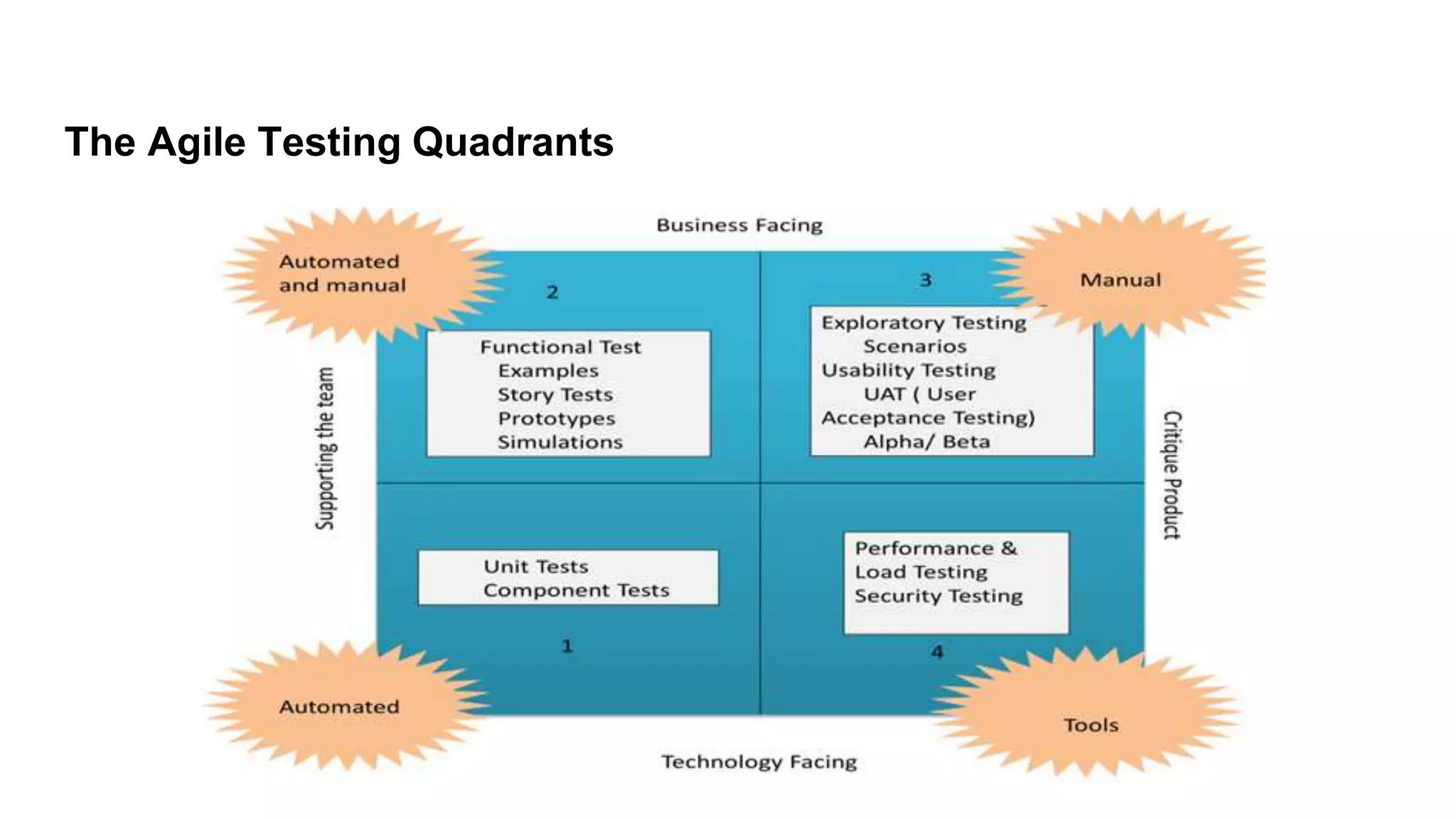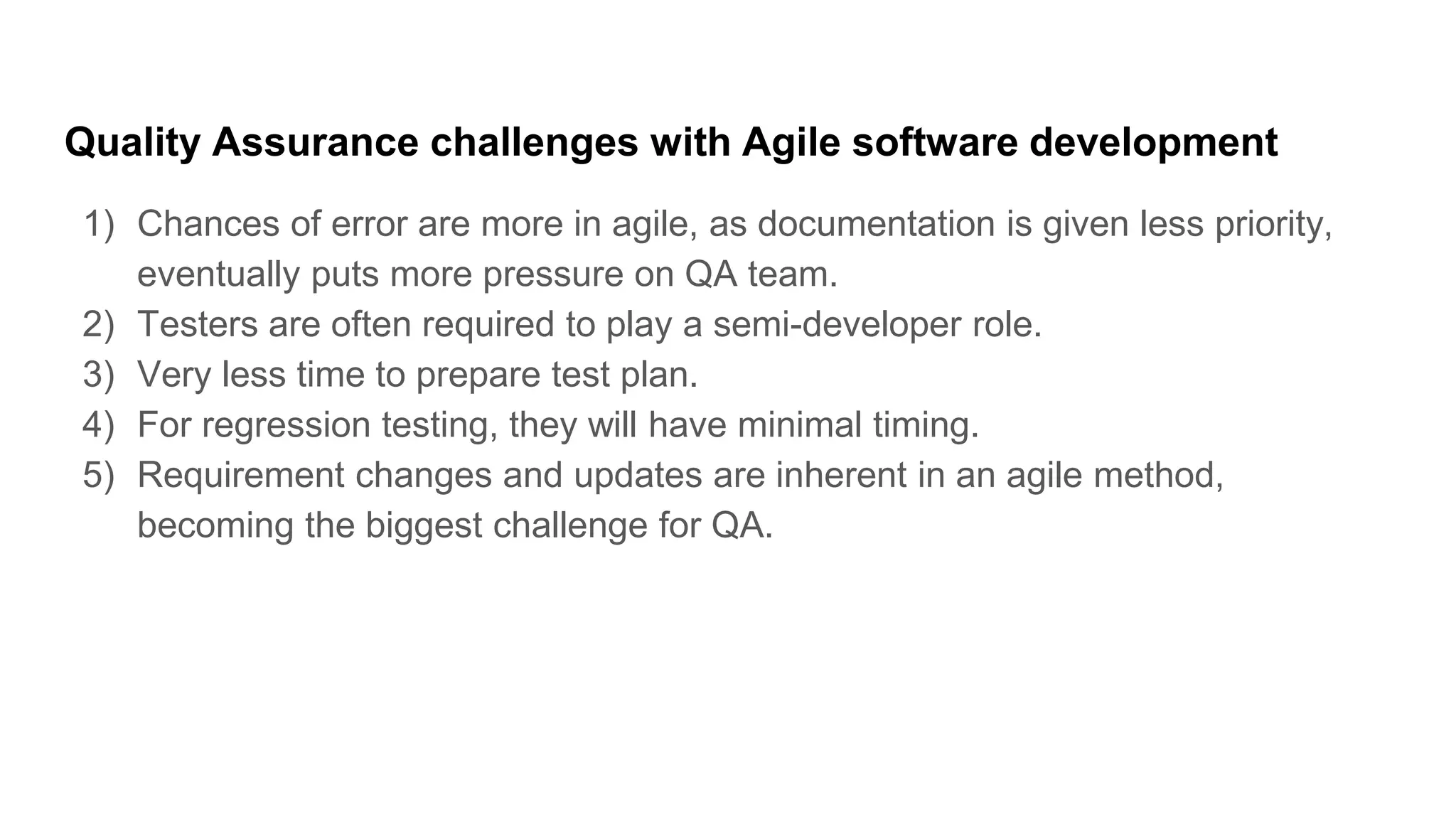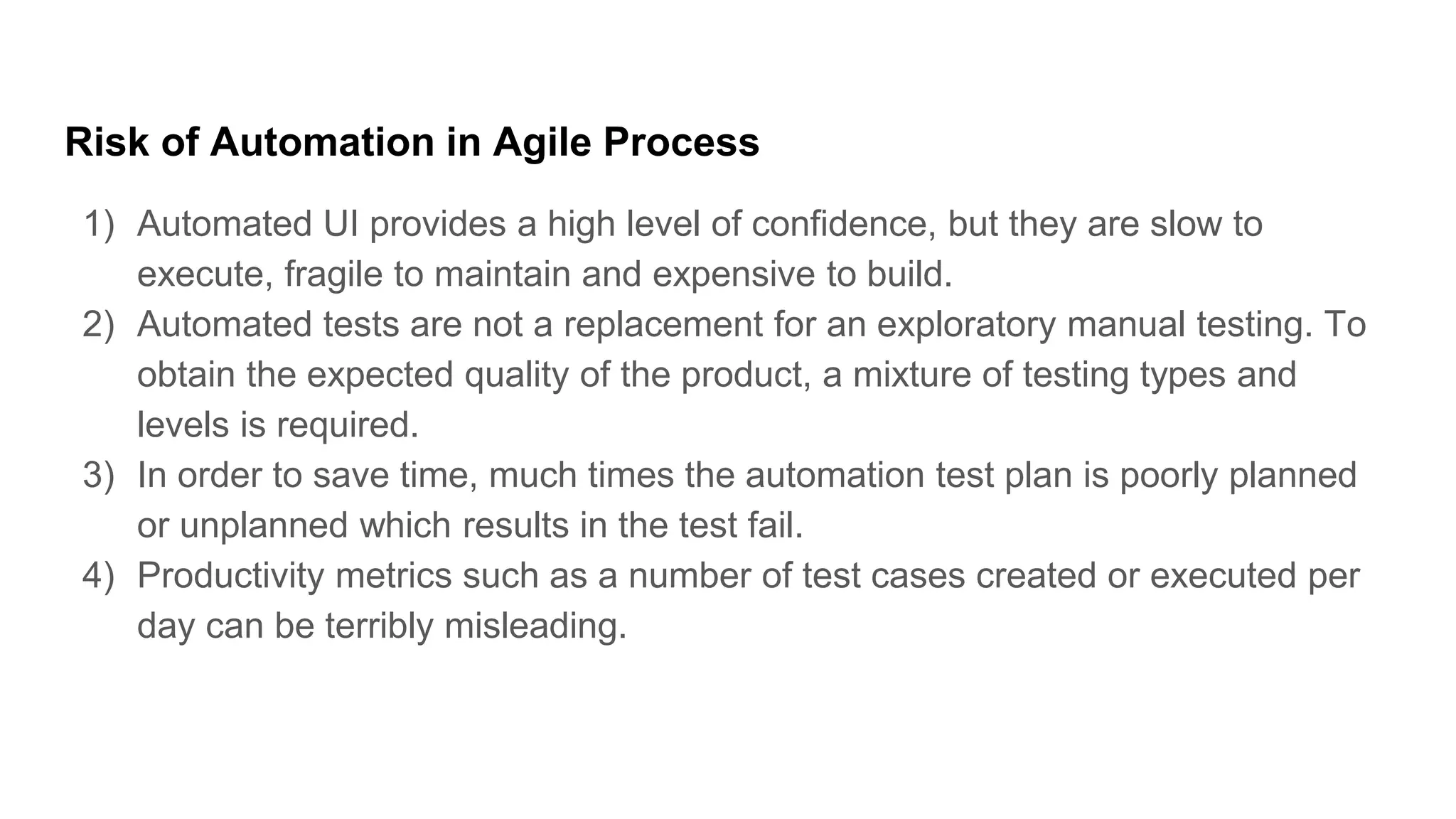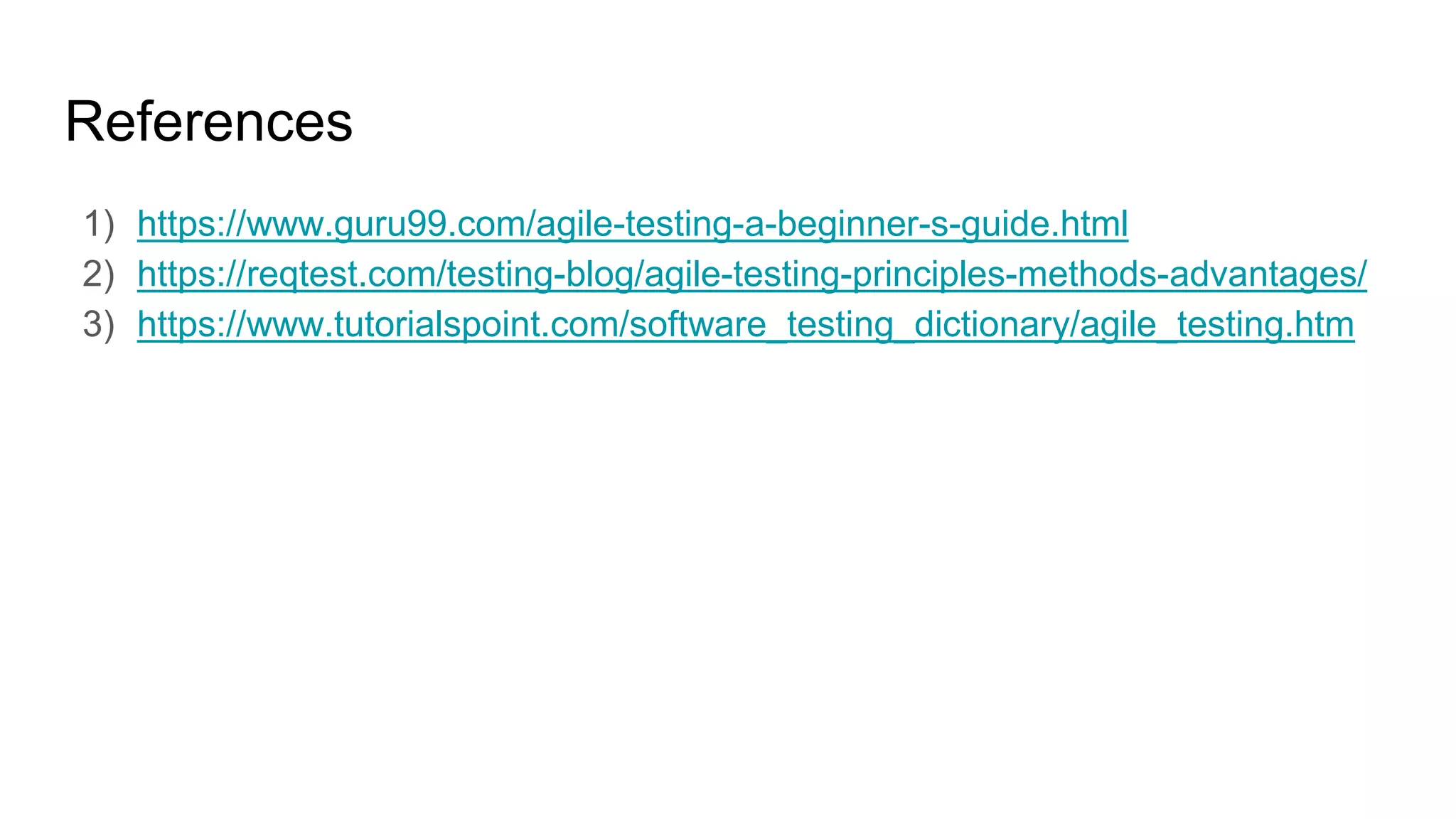Agile testing is a practice aligned with agile software development principles, enabling testing to start early and continue throughout the development process. It offers advantages such as time and cost savings, less documentation, and frequent user feedback, yet it also poses challenges like increased errors due to reduced documentation and the need for testers to adopt developer roles. Effective communication among teams is crucial for successful agile testing, which necessitates thorough and frequent regression testing to ensure product quality.


